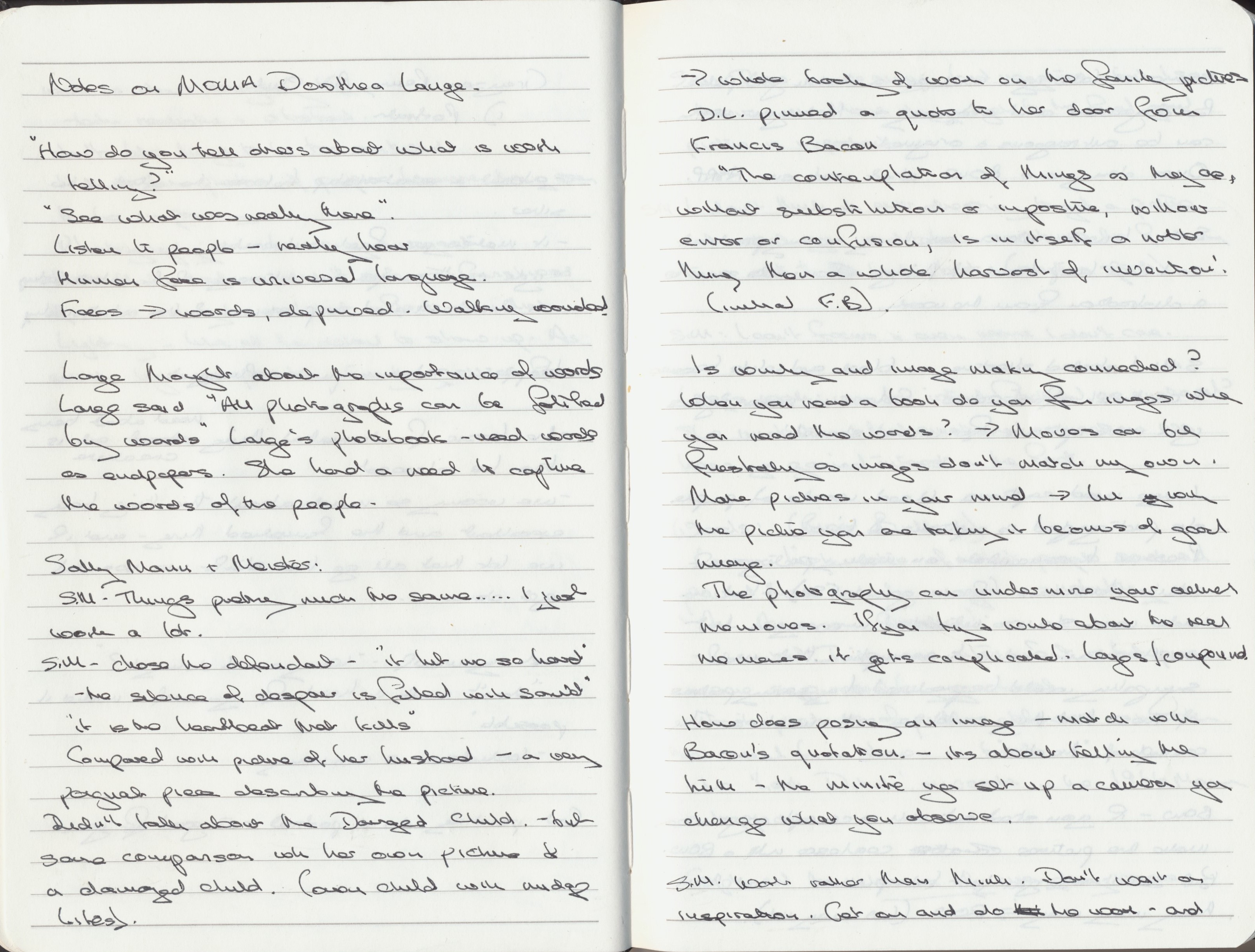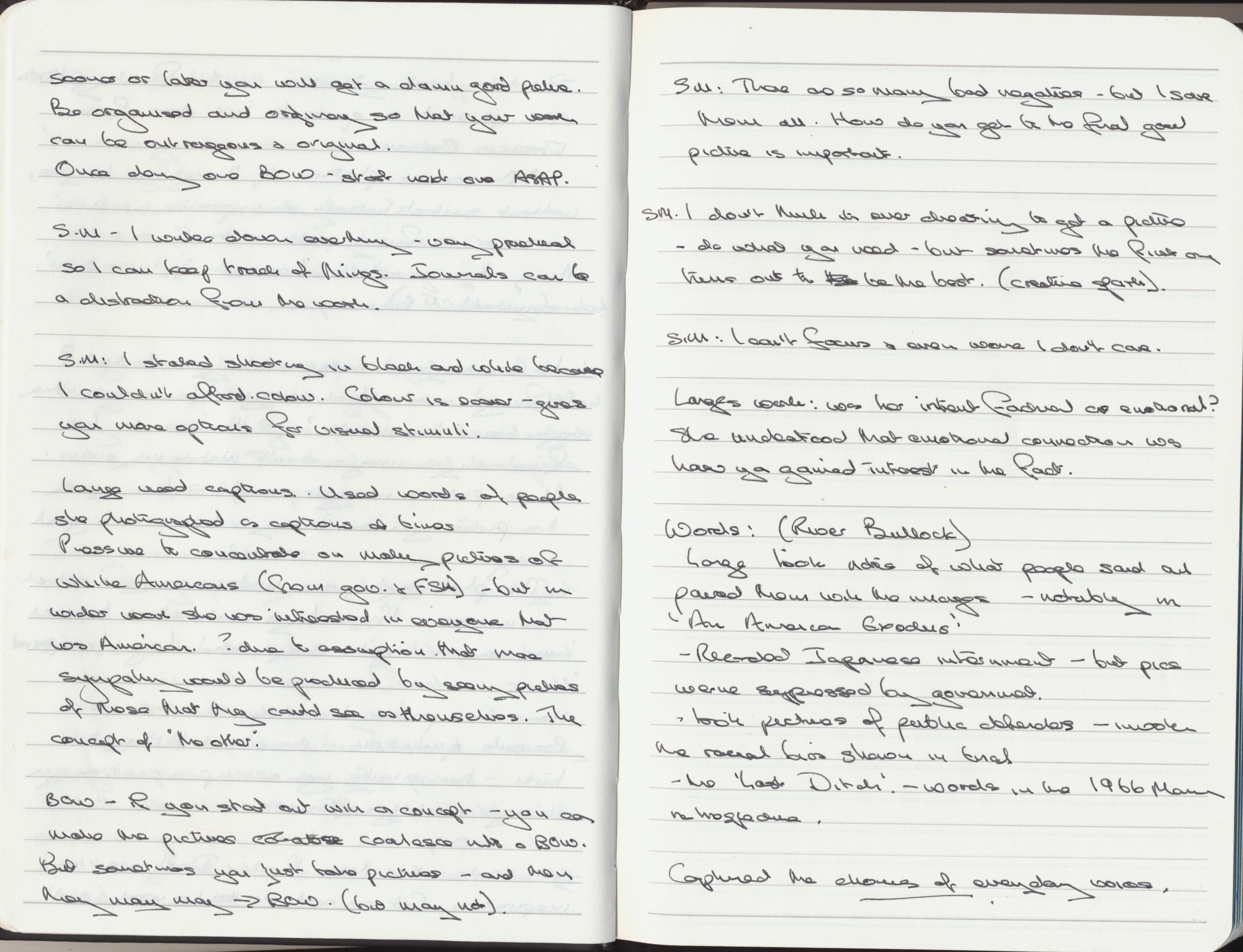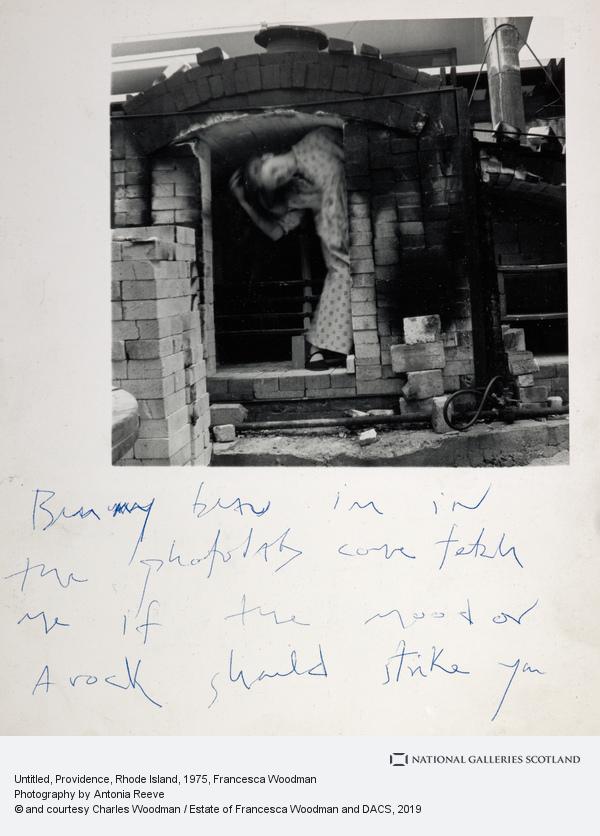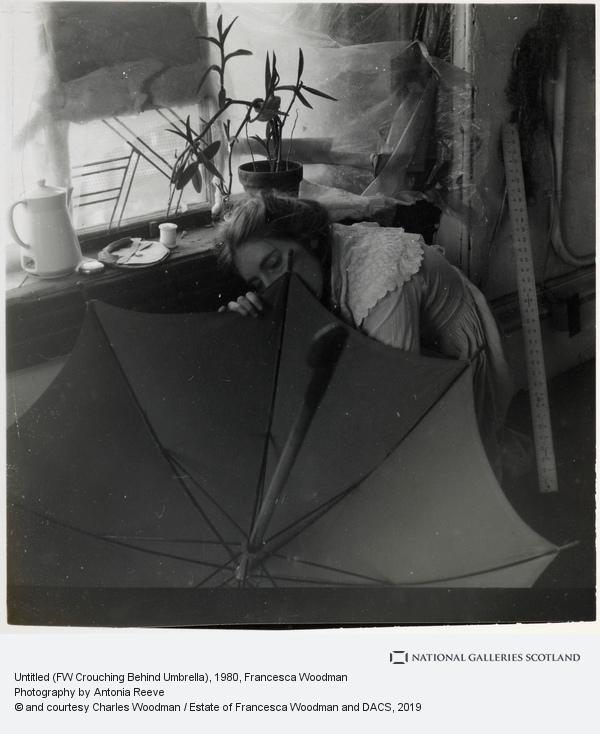Coincidentally, or you might say serendipitously, I came across the virtual exhibition on Dorothea Lange at MOMA (Meister, s.d.) just as I am starting Part 4, Image and Text of Identity and Place. In spite of her fame I know little of Lange’s work. There is the overriding image Migrant Mother. She worked for the Farm Security Administration. She was American. I am now going to have to travel down a long exploratory road.
The virtual exhibition shows installation views, where you can click on the images to see some, possibly not all, of the pictures displayed. There are also a series of videos discussing her work, a fascinating live Q & A session with Sally Mann and a work by Sam Contis Day Sleeper that shows the way her work has developed from exploring Lange’s work ‘ a fragmented, unfamiliar world centred around the figure of the day sleeper – at once a symbol of respite and oblivion’ (Contis, 2020). The images are available on the MOMA website. (Contis, s.d.)
I took extensive notes (appended below). In summary the main things I took from the videos were:
- See what was really there. Listen to the people and really hear
- The human face is a universal language
- All photographs can be fortified with words (Lange did this extensively)
- Mann’s description of The Defender “it hit me so hard…the silence of despair is filled with sound”
- The quote from Francis Bacon ‘The contemplation of things as they are, without substitution or imposture, without error or confusion, is in itself a nobler thing than a whole harvest of invention’ (Bacon lived 1562 – 1626).
- Photography can undermine your actual memories of an event or a place. You remember the image not the reality. Writing about it further compounds the confusion – layers on layers
- Work and get on with it
- Be organised and ordinary so that your work can be outrageous and original (a slight twist/modernisation on a Flaubert quote
- Lange was interested in everyone – not just the white Americans that the FSA wanted her to show
In the piece by River Bullock (Bullock, s.d.) she gives two quotes from Lange:
“I am trying here to say something about the despised, the defeated, the alienated. About death and disaster. About the wounded, the crippled, the helpless, the rootless, the dislocated. About duress and trouble. About finality. About the last ditch.”
“You see it’s evidence. It’s not pictorial illustration, it’s evidence. It’s a record of human experience. It’s linked with history. We were after the truth, not just making effective pictures. To tell the truth is in some people’s nature and it can be a habit, but you can also get in the habit of not telling the truth.”
There is a very poignant book of poetry by Tess Taylor Last West (Taylor, 2020) that has been written to coincide with the exhibition. It consists of a college of words from Lange’s own diaries, words spoken by the people she met and Taylors own words that she found while following Lange’s footsteps across California. It finishes:
you might walk for a while
as the road grows distant;
might feel in the silence
how you’re just walking –
might feel for a moment
how it’s just earth again.
I have also taken the opportunity to look at the exhibition catalogue (Meister et al., 2020) which contains a fascinating series of essays along with the images. In the first essay Sarah Meister talks about the use of words alongside images and how important Lange thought that to be. However, despite its importance, the words could change – Migrant Mother was only the last of a series of titles and descriptions given to that image. The story of this is told in the book including copies of Lange’s thoughts on it in Popular Photography (pp.134-145). Meister notes ‘In the hazy middle ground of truth and invention are the carefully selected truths that hold the powers to persuade’ (p.21). The book also contains a series of essays in which writers, photographers and philosophers talk about their favourite image in the exhibition. They make fascinating reading – the choice of Kimberly Juanita Brown is simply titled Grayson, San Joaquin Valley, California, 1983. It shows a clapboard building and only when you look closely you realise it is a church with a dead body on the porch. A surprising choice? – But when you check her online you discover that she is a professor specialising in gender studies, slavery, and the images of the dead. Other essays talk about the history related to the images ‘a ten-year apocalypse of dust, human suffering, and folly’, ‘will history continue to repeat until the torturous cycle collapses in on itself?’ (p.65) by Wendy Red Star (a Native American multi-media artist) on Tractored Out, Childress County, Texas, June 1938. Sally Mann’s writing about The Defendant, Almeida County Courthouse, California,1955-57 reads as a prose poem. ‘But the defendant’s heart: there is no warming sun, no warming spirits, no comfort of companionship’ (p.126). Much of the catalogue shows pictures of the books and magazines that Lange’s work was published in. It is, therefore, possible to read the text that they were originally shown with, alongside some comments that Lange or her co-workers made about them, for instance: “the Mormon story turned out very sour indeed” by Ansel Adams as the pictures they had chosen were severely cut down.
I am also reading the fascinating biography of Lange by Linda Gordon Dorothea Lange; A Life Beyond Limits.(Gordon, 2009). I think I may be a little Lange obsessed.
Notes:
References:
Bullock, R. (s.d.) Written by Dorothea Lange. At: https://www.moma.org/magazine/articles/245 (Accessed 08/05/2020).
Contis, S. (2020) Day Sleeper. London: Mack.
Contis, S. (s.d.) A Portfolio of Photographs from Sam Contis’s Day Sleeper | Magazine. At: https://www.moma.org/magazine/articlCes/293 (Accessed 08/05/2020).
Gordon, L. (2009) Dorothea Lange: A Llife Beyond Limits. (1st ed) London ; New York: W.W. Norton & Co.
Meister, S. (s.d.) Dorothea Lange Words & Pictures/MOMA. At: https://www.moma.org/calendar/exhibitions/5079 (Accessed 08/05/2020).
Meister, S. H. et al. (2020) Dorothea Lange: Words & Pictures. (1st ed) New York: The Museum of Modern Art.
Taylor, T. (2020) Last west. (1st ed) New York: The Museum of Modern Art.




















